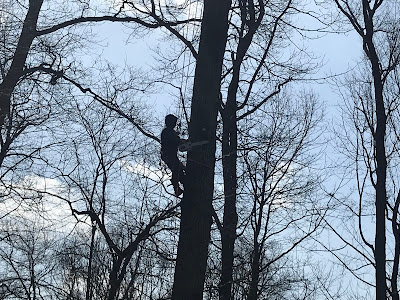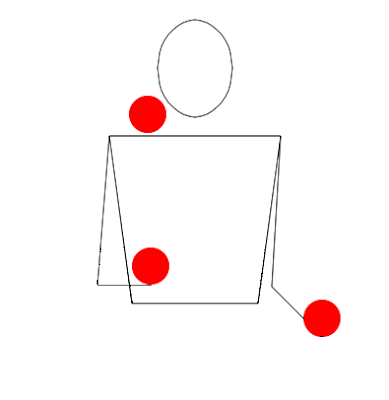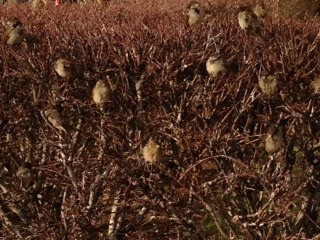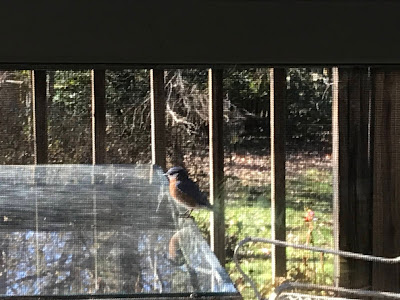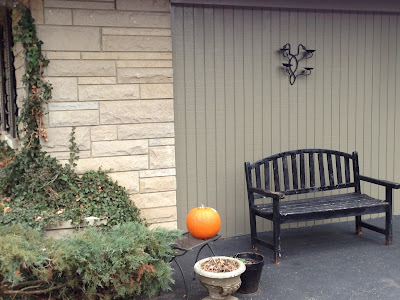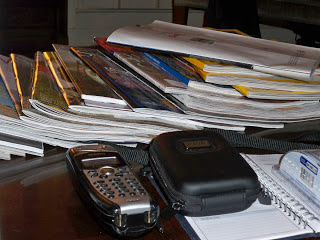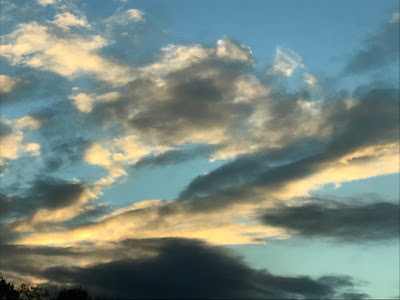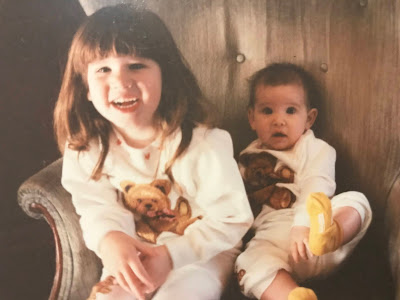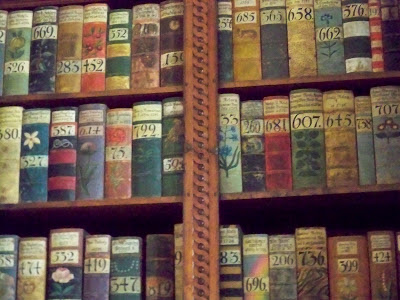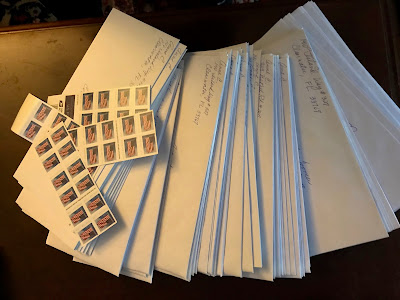Balls in the Air
After writing yesterday’s post I started thinking about how, if 2010’s Snowmageddon offered a few days off to clean a closet or start a blog, just think what 2020’s (and now 2021’s) lockdowns might produce. What novels and screenplays and landscapes and enchanted gardens will grow, have grown, from this enforced solitude?
A prodigious creative output for some, I’m sure … but not from me! I can barely keep up with my paying work, the blog and the rest of my life.
A 10-day snow storm does not equal an almost yearlong pandemic. It lacks the fear and confusion; it lacks the duration. So while I have more time now to put words on paper, I’m keeping many of those words inside, hoping for time soon to process what we’ve been enduring.
For now, I’m just trying to keep the balls I was already juggling in the air. Maybe I’m alone in this — but I bet I’m not!
(Starting my 12th year of blogging by adding a GIF. Will it work? It seems to on my end!)
Eleven Years
Eleven years ago today, on another snowy Super Bowl Sunday, I started this blog. It was something I’d been meaning to do for years, but the windfall of time made possible by a weather disruption gave me the space I needed to make the resolution come true.
I still remember sitting on the couch, setting up the blog account, finding it easier than I thought. I had the title in mind, and a rough idea of what I wanted to say (though it would take months to learn how to size the photos), but it came together with the ease of something that was meant to be. It seemed to me then, and on good days still seems to be … magic.
Magic occurs when ideas have the room and reception to put down roots and grow. “Ideas are driven by a single impulse: to be made manifest,” writes the author and memoirist Elizabeth Gilbert. “And the only way an idea can be made manifest in our world is through collaboration with a human partner.”
For eleven years, I’ve partnered with the idea of A Walker in the Suburbs, writing about walking and place and books and family life. I’m glad it came to visit me, this idea. But most of all, I’m grateful I chose to welcome it.
NaWriMo’s End?
Two years ago, I wrote a novel during National Novel Writing Month. It was an intense experience, in part because I only decided to do it on November 2 so was playing catch-up from the start, and in part because it was a stressful time in my life otherwise. But it was a valuable discipline as disciplines go, so this year I decided to modify it.
Instead of celebrating National Novel Writing Month (affectionately known as NaNoWriMo), I celebrated National Writing Month, which is an observance of my own concoction, a time when my own writing comes fist because I wake up two hours earlier to do it.
Practicing this for 30 days convinces me (as it has in the past when I’ve made similar efforts), that it’s the writing that matters. Doing it first and doing it often starts my days off in the way they should begin. Like composing the proper outline for the high school theme, the dedicated writing time becomes the frame on which I hang my day.
Today is December 1. NaWriMo is over. I could stop rising early, sitting in the dark living room with these keys beneath my fingers, letting them take me places I hadn’t thought to go.
Or then again, I might keep right on doing it. NaWriMo is over. My writing … is not.
Cooking Up Memories
I just pulled out an old cookbook that falls apart when you open it. There are a few recipes in there I still use, and one of them is the cranberry salad I make at Thanksgiving. It’s a molded salad that involves Jello — yes, Jello! — but goes way beyond church potlucks in its appeal. It’s tangy and elegant, a different way to do cranberries.
This cookbook is a window into my past, a long-ago birthday gift from a friend I still count among my dearest, given to me at a pivotal point in my life, when I was moving back to Lexington from Chicago.
The move was designed to let me try teaching and writing at the same time and see which one “won,” which one I would pursue further. There was no contest, and generations of high school English students are the poorer for it.
Only kidding, of course. It’s I who am the richer for it. And seldom a day goes by that I don’t realize it.
Writing Together?
As a new grandmother I’m certainly not skimping on the photos or the ink — or what passes as digital ink, the keystrokes that allow me to describe in detail all the glories of my new grandchildren.
But a passage in a book I was re-reading last night brought to mind a time when recording one’s life was near to impossible and led to an odd sort of epistolary cohabitation.
At the end of Hilary Mantel’s Bring Up the Bodies, Cromwell writes at his desk. “Paper is precious. Its offcuts and remnants are not discarded, but turned over, reused.” As a result, he finds the penmanship of Cardinal Wolsey, his departed friend, “a hasty computation, a discarded draft,” Mantel writes. But Cromwell “had to put down his pen till the spasm of grief passed.”
Imagine what our world would be if we had to reuse the scrap paper of our friends and neighbors. Would it help us see the world from another perspective? Would it bring us together?
The answer, I’m afraid, is clear: It certainly didn’t help the 16th century.
Reclaim the Morning
I thought I would write about voting on November 3, 2020, an election day long awaited, long feared. But I figure I’ll have plenty to say about the election tomorrow.
What strikes me as words-worthy today is the morning, is finding it again in the wreckage of Eastern Daylight Time, discovering its glimmering, shimmering self among the ruins of the warmth and the tattered leaves of autumn.
Fall-back has given some of us an extra hour to clean the closets and others a welcome roll back to sleep early Sunday morning.
But for me, it’s been a way to reclaim the morning, regaining what I lost in my quest for more sleep, which are these precious golden hours before the day begins. I’ve been missing those — and now, at least for a few days, I have them again.
Birth Stories
Ever since becoming a grandmother I’ve meant to find the journals where I described the births of each of my daughters. I was put off by the digging it would take me to find them.
But yesterday I had a few moments, so I looked in the most logical first place — a drawer in a dressing table where I keep some of my old (now well-filled) blank books. And there, right on top, was the journal describing Celia’s arrival — what I’d done that day (Christmas shop) and how it felt (scary!) to look up at the hospital sign from a distance, counting contractions while sitting in a rush-hour traffic jam.
Beneath that journal was the one with the pages for Claire’s arrival. The heat of those summer days came alive again for me, as did the rosebud mouth and cute little nose of my second-born.
And finally, there was the journal that described Suzanne’s birth. I labored longer with my first, of course, and the nurses were marvelous, especially one whose name had escaped me — until yesterday.
It’s not as if I’d forgotten the moments when each of these precious babes was put into my arms, and many of the details were there, too. But to relive the excitement in my own voice brought me back to those days in a way no photograph could — and made me glad that even in that early, new mother exhaustion, I chose writing over napping, that I picked up my pen, grabbed my blank books and wrote the birth stories.
Mind and Body
Over the weekend I read an essay about the power of literary analysis in the college classroom — and, because of the unique times in which we live — also not in the college classroom. Apart from the many excellent points made about education in the humanities — the lessons of the great books have never mattered more, the ability to think and analyze is prized in the workplace — the author, Carlo Rotella, made one that brought a crucial point to mind.
While teaching via Zoom, Rotella said, he realized how much he uses visual cues in his class, figuring out who he should call on, who’s getting a concept and who is not. I ran this through my own, English-major memory, and sure enough, the same seems true from the student’s point of view.
What I remember most about college literature classes is not just the ideas that seemed to be exploding in my brain as we discussed The Magic Mountain or The Brothers Karamazov, but the visual impressions my teachers left as well.
I recall in particular my favorite college professor, Dr. Ferguson, who would curl himself around the podium when he lectured, one knee on the desk, one foot on the floor, while stork-like, he led us through the great books. It’s not that I don’t recall the ideas themselves — I think about them all the time — but until I read this essay I wasn’t aware of how closely they are linked to the physical peculiarities of the professors who introduced them to me.
This essay triggered a dialogue in my brain, a conversation between the author and me, and the part that I supplied surprised me — as it should, when the “conversations” are deep and good.
The Big Send
In an hour or two, I’ll drive to the Oak Hill post office to mail 100 letters, part of the Vote Forward campaign which today will send 15,000,000 (that’s 15 million!) letters to voters in swing states. The organizers are calling it the Big Send.
It’s a way to canvas for votes during a pandemic and it’s business for the beleaguered U.S. Postal Service. Plus … and this is my favorite part … it’s a vote of confidence for the old school approach: pen and paper, envelopes and stamps, snail mail. It’s harkening back to an epistolary mode of communication that’s so old it’s new again.
I’m glad I could find time recently to pen a few lines to voters who are registered but seldom go to the polls, explaining why I vote and encouraging them to do the same. It’s not exactly knocking on doors, but it’s a small movement in that direction.
